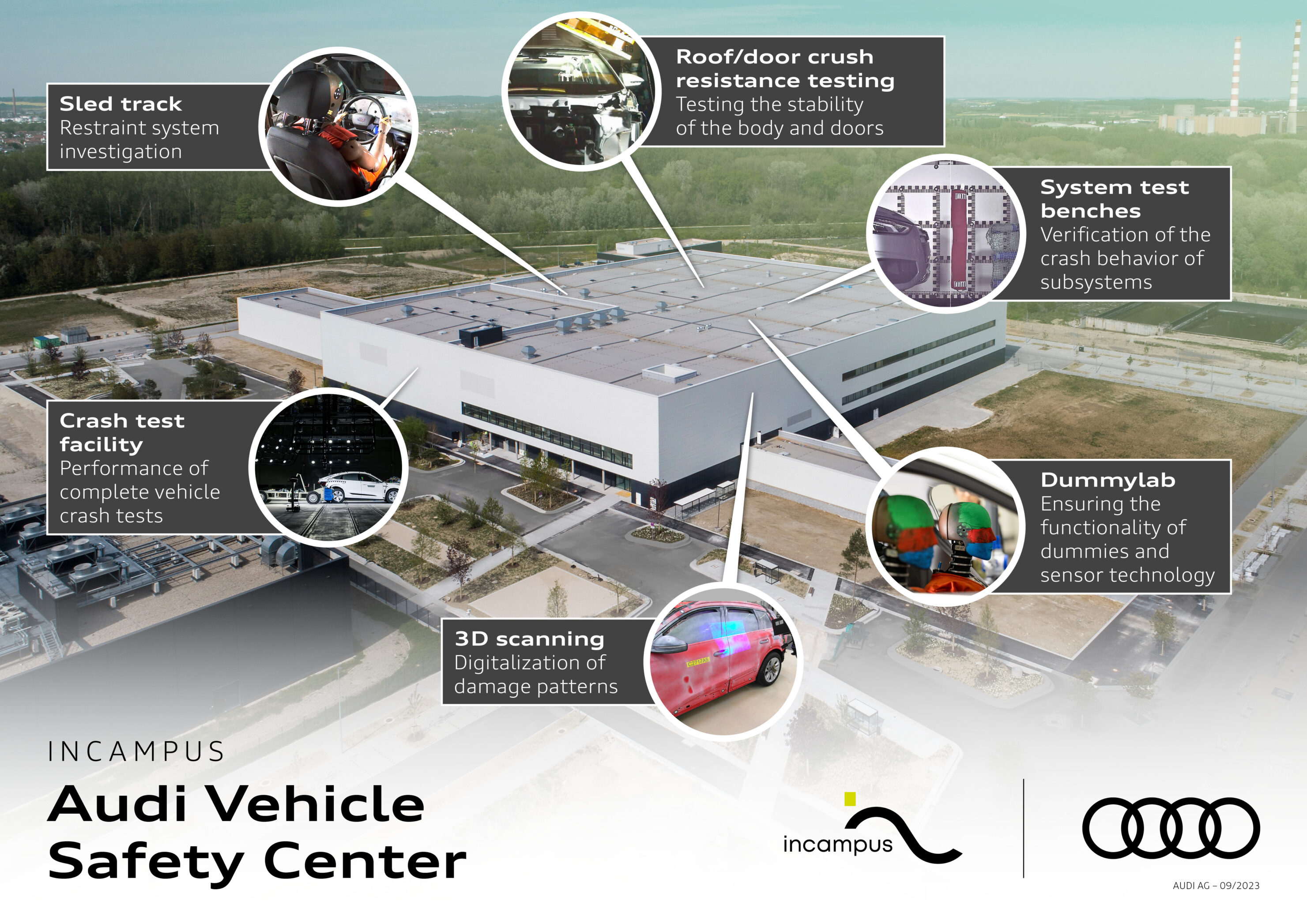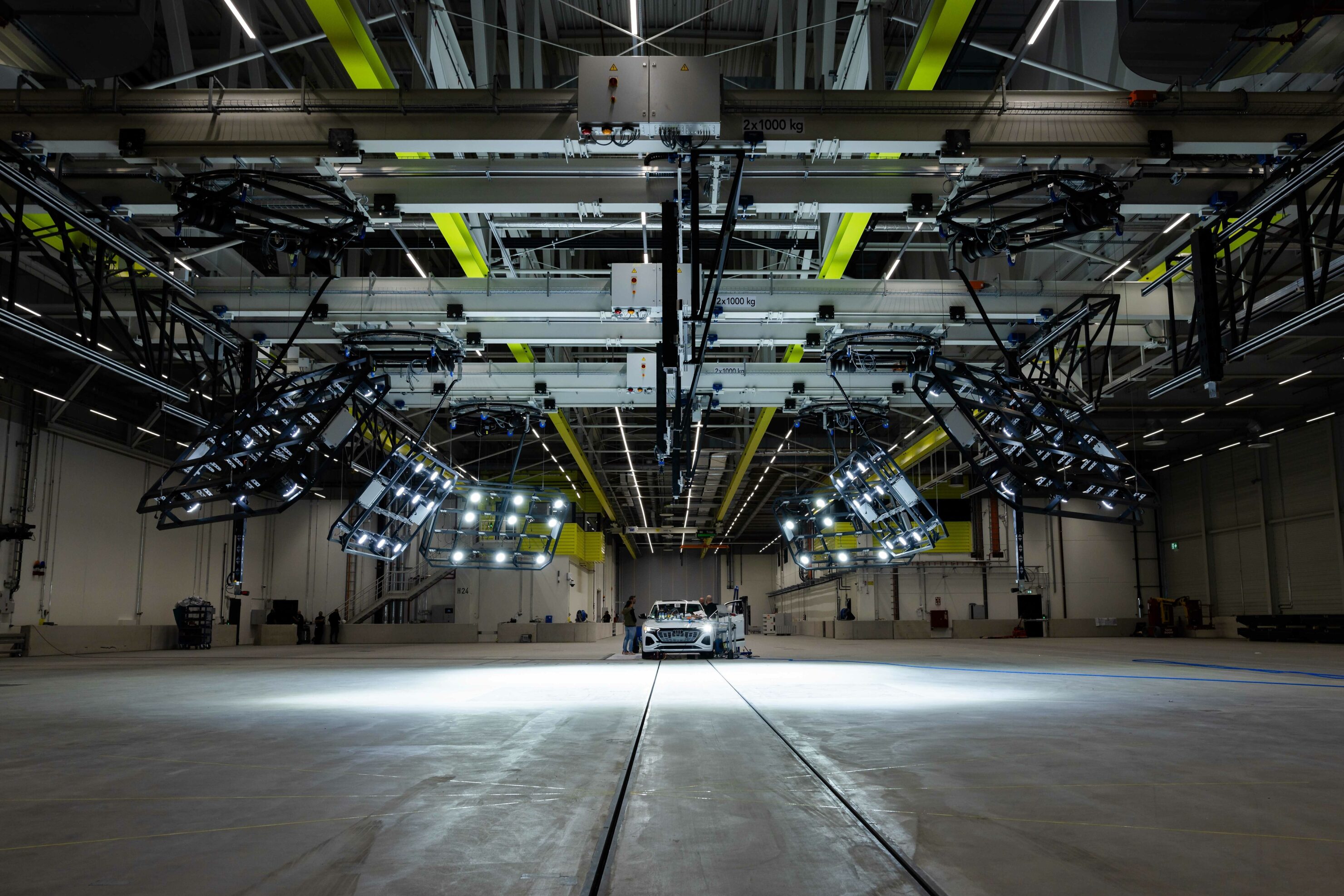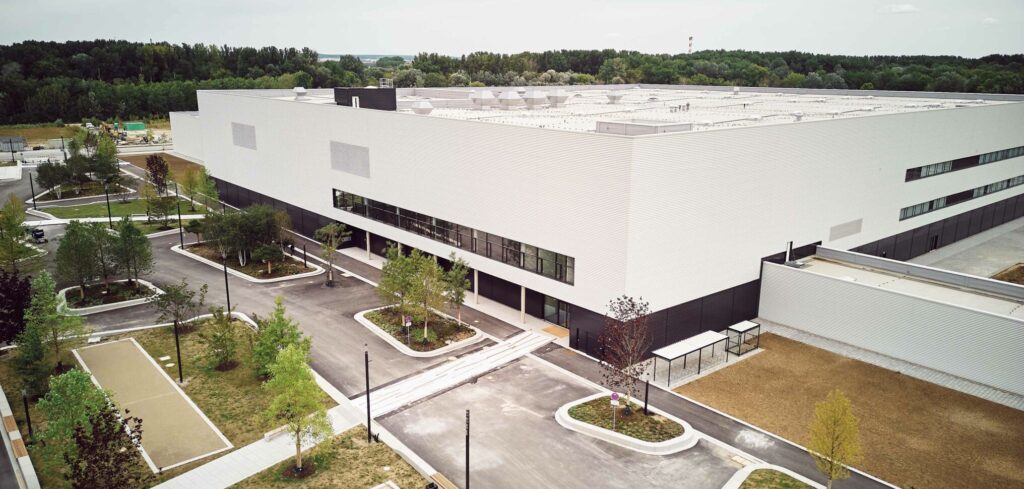Audi has opened its new Audi Vehicle Safety Center in Ingolstadt, Germany. Investment in the new facility was around US$105m and it has taken three years to construct. It significantly improves the brand’s crash test facilities with a 250m (820ft) run-up track, a mobile 100 ton crash block and the ability to perform 90° crash tests with two vehicles.
The new facility is part of Audi’s new Incampus technology park and its 100 employees will be able to conduct tests to meet the requirements of markets around the world. Audi says it has also designed the center to be able to adapt to any future testing standards that might be implemented.
Covering a main area of 130 x 110m (430 by 360ft) with a height of 20m (65ft), the new center is much larger than Audi’s previous facility. The integrated crash arena consists of a support-free area measuring 50 by 50m (165 by 165ft), while the opposing run-up tracks have a total length of 250m (820ft), enabling tests at speeds exceeding today’s usual requirements.
“Safety is a top priority at Audi. Our new vehicle safety center is impressive proof of this commitment,” said Oliver Hoffmann, member of the Audi board of management for technical development. “Today’s Audi models achieve outstanding results in globally valid test procedures. But we’re not resting on our laurels. Instead, we’re continuing to improve our development and testing capabilities.”
 A crash block weighing 100 tons is arranged in the crash arena so that it can be moved and rotated for the many different types of crash tests. The area is criss-crossed with several crash lanes, enabling research on collisions between two vehicles and integral safety. A so-called “flying floor” also enables vehicles to be driven sideways against obstacles.
A crash block weighing 100 tons is arranged in the crash arena so that it can be moved and rotated for the many different types of crash tests. The area is criss-crossed with several crash lanes, enabling research on collisions between two vehicles and integral safety. A so-called “flying floor” also enables vehicles to be driven sideways against obstacles.
There is a coasting slide with a delay unit for testing belt systems and airbags and the facility has a full crash test dummy lab. More than 60 Thor dummies of various types are used in the new crash arena, from an 18-month-old toddler to an adult weighing 102kg (225 lb).
The latest in high-speed cameras, LED lighting and motion tracking have all been fitted in the center to capture the sequence of events during crash tests. 3D scans are used to process post-test deformations digitally and all the data is fed into a back-end and analyzed in the IT center that is part of the new Incampus site. The IT center also plays a role in the tens of thousands of crash simulations conducted each month.
Audi recognizes that despite the rapid progress in simulation technology, actual crash and component tests remain essential. This is because the various national authorities in countries where Audi models are marketed have approval procedures that require physical crash tests. In product development, on the other hand, the two methods are highly synergistic, with findings from both simulation and physical testing flowing into the process.
Audi says its new vehicle safety center represents the next major step in the advancement of passive safety for the brand. At the same time, the presence of other Volkswagen Group institutions involved in safety, including Cariad and the Technische Hochschule Ingolstadt on the Incampus, will be able to facilitate interdisciplinary exchange.



